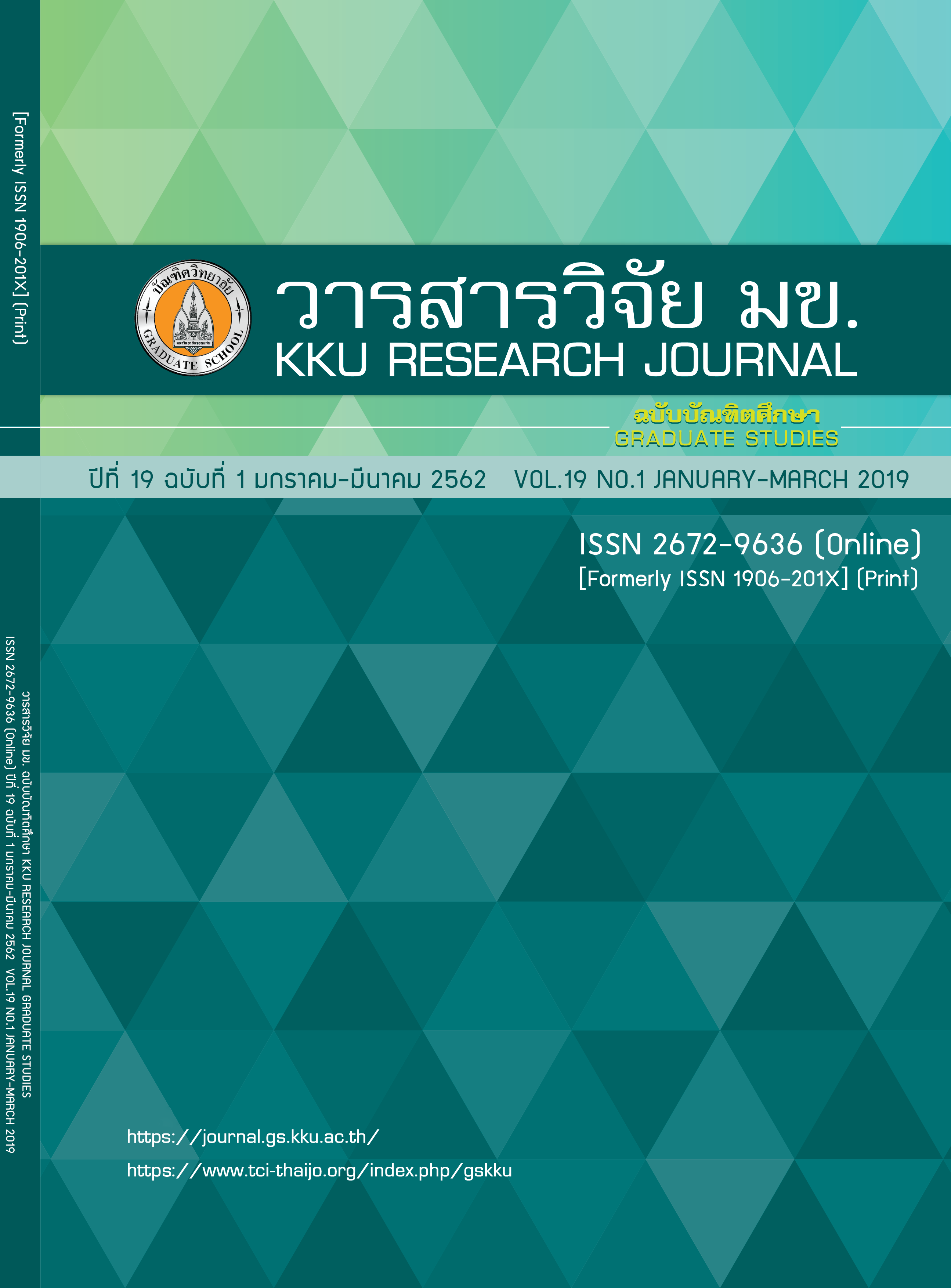Effect of Current Density on Zinc Morphology Deposited on Copper Plate for Using as an Electrode
Keywords:
Zinc electrode, Zinc battery, Zinc morphologyAbstract
Electrodes were prepared by an electroplating of zinc onto a copper plate using zinc sulfate with the concentration of 1.0 M as an electrolyte. The electroplating of zinc was used in various current density in the range of 0.02 – 0.10 A/cm2 with the constant plating time of 1 hour. The morphology and structure of the prepared zinc electrodes were characterized using the scanning electron microscope (SEM) and x-ray diffractometer (XRD), respectively. It was found that the current density had effect to zinc morphology which deposited on copper plate. Furthermore, zinc electrode had tested the performance with MnO2 electrode which was prepared by thermal pressing forming method in which KOH and were used as the electrolytes of a battery cell. The result was shown that the Zn-MnO2 battery could be charged and discharged up to 100 cycles and could achieve the high capacity of 67 mAh. Moreover, zinc electrode which had an intensely arranged structure gave a long life cycle more than the zinc electrode which had a disordered structure.
References
2. Ito Y, Nyce M, Plivelich R, Klein M, Steingart D, Banerjee S. Zinc morphology in zinc–nickel flow assisted batteries and impact on performance. J Power Sources. 2011 Feb 15;196(4):2340–2345.
3. Pai Y-H, Lin G-R. Electrochemical behavior of Zn anodes in Zn/air batteries for nano-roughened ZnO structure synthesis. In: 2010 3rd International Nanoelectronics Conference (INEC). 2010. p. 503–504.
4. Mouanga M, Ricq L, Douglade J, Berçot P. Corrosion behaviour of zinc deposits obtained under pulse current electrodeposition: Effects of coumarin as additive. Corros Sci. 2009 Mar;51(3):690–698.
5. Kei N, E. Chassaing, Michel R. In situ concentration measurements around the transition between two dendritic growth regimes. Electrochimica Acta 56 (2011) 5464–5471.
6. John W. Diggle and A. Damjanovic. The Electrocrystallization of Zinc Dendrites in High‐Purity and Inhibitor Doped Alkaline Zincate Solutions. J. Electrochem. Soc. 1970 volume 117, issue 1, 65-687
7. Sharifi B, Mojtahedi M, Goodarzi M, Vahdati Khaki J. Effect of alkaline electrolysis conditions on current efficiency and morphology of zinc powder. Hydrometallurgy. 2009 Oct;99(1–2):72–76.
8. Ingale ND, Gallaway JW, Nyce M, Couzis A, Banerjee S. Rechargeability and economic aspects of alkaline zinc–manganese dioxide cells for electrical storage and load leveling. J Power Sources. 2015 Feb 15;276: 7–18.



